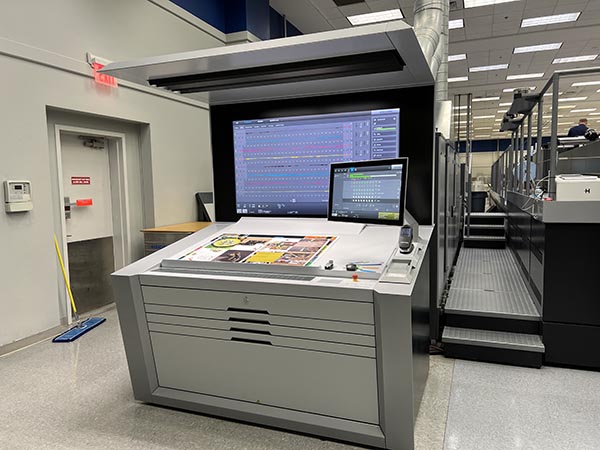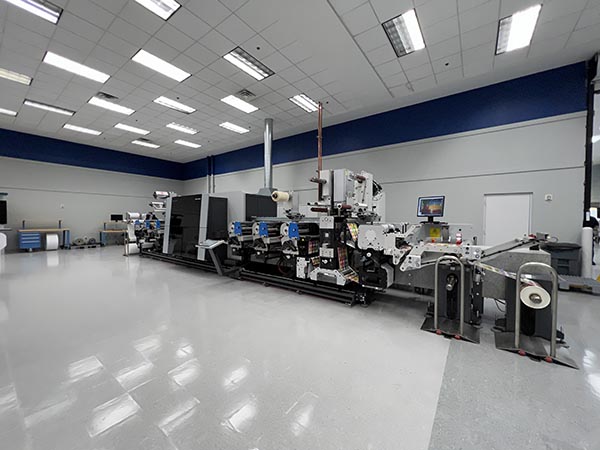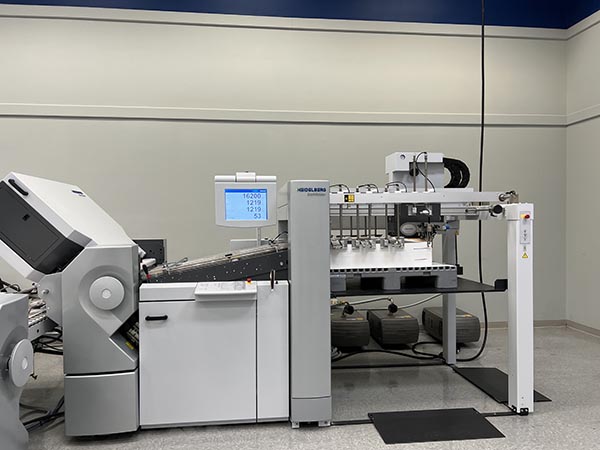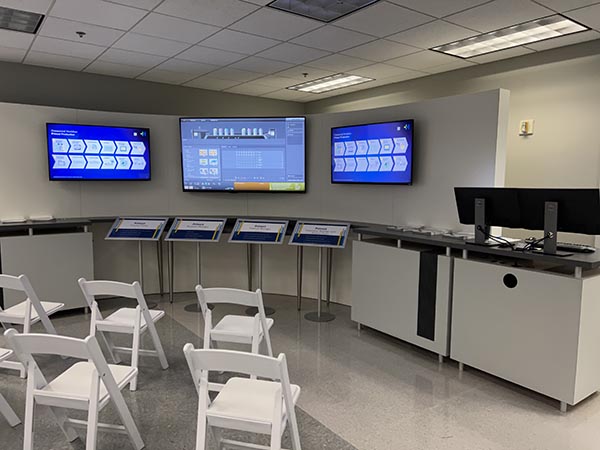(Watch David Zwang’s interview with Clarence Penge, EVP Product Management, Heidelberg US, here.)
Background
Heidelberg, aka Heidelberger Druckmaschinen AG, is a brand that is synonymous with printing and has been since its founding in 1850. Their fame began with the introduction of the original Heidelberg platen press commonly known as the “Windmill.” Today, however, they have solidified their position as the sheetfed offset market leader with over 40% of the installed market globally and 50% in the United States.
As the print market has evolved, like all other analog and digital press manufacturers, Heidelberg has had to pivot to address the new market demands. Historically, engineering technology companies like Heidelberg have found it difficult to realign their products and services to changing market demands and unfortunately some don’t make it. Fortunately, while their transition had been a bit challenging, the company is successfully implementing the transformation and Heidelberg’s market capitalization has more than tripled in the last twelve months to over €700 million and they have returned to trading on the stock market index SDAX.
Heidelberg appears to be on solid ground with an impressive product line and exciting plans for future growth. This product line includes state of the art digitalized offset presses, flexo and hybrid presses, digital print offerings, and state of the art postpress systems designed for commercial print, labels, and folding carton applications. All of this can be tied together with Prinect, their modular software solution that performs as “the heartbeat” of a print and packaging plant. On a recent trip to the Heidelberg USA headquarters and Print Media Center in Kennesaw, Ga., I had an opportunity to see many of their offerings firsthand and it was impressive.
Digitalized Offset Presses
Basically, Heidelberg is looking to further build on its strong position in the expanding packaging segment and meet the growing demand for flexible printing systems with a variety of automation solutions and variants in the commercial sector. When people think of offset presses, they inevitably envision lots of operators running around a big noisy iron machine with wrenches and ink- and oil-covered hands. This is no longer the case; in fact, the Speedmaster XL 106, which was to be introduced at drupa 2020, was designed for the inevitable comparison to production inkjet machines. The “Push to Stop” designation reflects the advances made through the digitalization of the press design and operation. Some of these include automatic preset feeder, plate changer, blanket and impression cylinder washing, inking, and dampening setup. Importantly, it also includes Prinect Inpress Control 3 which automatically measures and controls register and color inline during production, and by so doing reduces makeready times and waste sheets. While I was there, they ran five jobs with 38 plate changes including straight printing, perfecting, Pantone colors, and coating all in about 18 minutes. The user interface of the press operators’ cockpit gives them access not just to the press operation, but also to the schedule and performance stats.

Flexo and Hybrid Presses
For the growing label market, Heidelberg fully owns and markets the Gallus line of flexographic presses. On display at the Print Media Center was the Gallus Labelfire 340 hybrid press with an inline seven-color plus white digital inkjet module operating at a native resolution of 1200 x1200 dpi with Fujifilm Dimatix Samba printheads. It prints with a low-migration aqueous UV ink, which is compliant with Swiss Ordinance, Nestlé Guidance, Eupia, GMP. Of course, it also included a semi-rotary die-cutter and can be configured to your requirements including with an inline digital embellishment unit to create matte and gloss effects in various thicknesses.

Although it was not on the floor at the Print Media Center, Heidelberg also manufactures a web-fed inline flexo printing press designed for carton board or paper up to 165-lb. This high-definition press currently runs at 2000 ft./min. (600m/min) and can be configured roll-to-roll or roll-to-die-cut for high-volume production. Expect some new announcements later in 2022 that will bring quality and efficiencies of this press to new heights.
Postpress
Heidelberg recently introduced the “Push to Stop” designation on some of their finishing equipment. On display was their Stahlfolder which has an increased capacity of 50%, a result of the digitalization of controls and setup. They also introduced automation with P-Stacker, further reducing the need for operator intervention with a robotic arm, further enhancing the productivity of the folding machine.

The POLAR cutter and its process has also been digitalized and automated with the introduction of new Cutting Systems that can provide up to 100% increased throughput and reduced labor cost.
In addition to finding entry-level postpress workers, a recent study done in Europe found that postpress operators have a higher rate of missed workdays of about 40 days per year due to the strenuous work of lifting and moving heavy loads. These types of postpress automation options can provide relief and demonstratable cost savings.
For folding carton work they displayed and operated an MK from Masterwork Easymatrix die-cutter and the Diana Go folder/gluer to finish it off. In both cases, the product line is expansive beyond the two on the floor.
Prinect Workflow
The digitalization of the Heidelberg equipment provides efficiencies throughout the print and packaging production process. However, at the heart of it all is Prinect. Today, the Prinect Workflow solution is all about reducing touchpoints and providing business intelligence. This includes modules that start with the integration and processing of customer orders. It then automates prepress, scheduling, bidirectional communication with the production equipment and personnel all with the goals of increasing productivity and reducing waste.

Prinect takes it further by providing business intelligence. Through the process of integration and control of the plant processes, metrics on machine and plant performance can be collected and analyzed. Prinect Smart BI is a cloud-based solution that can process those metrics and provide the print service provider with reports that can be converted to actionable goals. The Prinect Data Warehouse which resides in the Microsoft Azure Cloud can also provide the print service provide a way to compare their plant results with other similarly configured plants around the globe. It’s a great way to gauge and benchmark performance to set goals for improvement.
Yes…Car Charging Stations
Much of what Heidelberg has learned in building printing equipment, including electronics, has provided them the experience needed to develop new product offerings. For example, the requirements of charging technologies for printing presses and electric vehicles are quite similar, so they developed the Heidelberg Wallbox. It is a charging system for the home market and semi-public sector for electric cars and is now one of the leaders in Germany, and soon beyond. Additionally, they are developing printed electronics solutions, and the list goes on. It will be interesting to see where it all goes.
More than Equipment and Software
Through the years, Heidelberg has seen the importance of creating a “Lifecycle” relationship with their customers. While most print equipment manufacturers like to stay in touch with their client base, Heidelberg seems to take it further. Heidelberg Assistant is their support offering which can include consumables, analytics, predictive monitoring, virtual and onsite education, and of course readily available support. They have found that by providing these services they can help their customers increase their OEE and profitability.
Heidelberg has also upgraded their very interesting Apprenticeship Program to train their service and support team. The program has existed since 2007, but they have recently further formalized the program and increased the class sizes to support the aging out of some of their more senior staff, with a goal of hiring 25 people in the next 18–24 months.
In Closing
We all like to see new print and production technologies, and digital printing developments have been providing that to us for years. However, after seeing what Heidelberg has accomplished with the digitalization of their equipment and processes, I believe that they are in a great position to grow and compete for the long term.
More to Come…
I would like to address your interests and concerns in future articles as it relates to the manufacturing of Print, Packaging, and Labels, and how, if at all, it drives future workflows including “Industry 4.0.” If you have any interesting examples of hybrid and bespoke manufacturing, I am very anxious to hear about them as well. Please feel free to contact me at [email protected] with any questions, suggestions, or examples of interesting applications.














